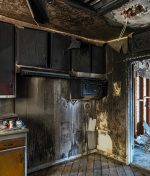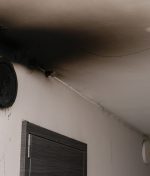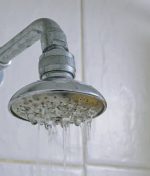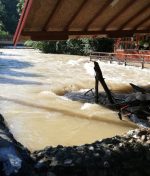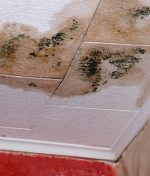How Can Dehumidifiers Help Prevent Mold After Water Damage?

- July 3, 2025
- byadmin
- Flood Restoration
Water damage can strike unexpectedly—from burst pipes and roof leaks to severe floods and overflowing appliances. While visible water may be cleaned up quickly, the lingering moisture hidden behind walls, under floors, and in the air can quietly create the perfect environment for mold to grow.
That’s where dehumidifiers come in. These powerful machines are essential tools in the water damage restoration process, especially when it comes to preventing mold from forming in the days and weeks that follow.
Why Mold Grows After Water Damage
Mold is a natural fungus found both indoors and outdoors. However, when it grows unchecked inside a home, it can cause serious health issues and structural damage. Mold spores thrive in moist, warm, and dark environments—conditions that often develop after water damage.
Even a small amount of excess humidity or trapped moisture can trigger mold growth within 24 to 48 hours. It spreads quickly through porous materials like drywall, wood, insulation, and carpeting, releasing spores that can contaminate other parts of your home.
To break this cycle, the key is removing the moisture before mold takes hold—and that’s where dehumidifiers are essential.
How Dehumidifiers Work in Water Damage Restoration
Dehumidifiers work by pulling excess moisture out of the air and collecting it as liquid in a tank or draining it through a hose. In the context of water damage, they are used alongside air movers and industrial fans to accelerate the drying process and lower humidity levels inside the property.
When properly used, dehumidifiers can:
- Lower the relative humidity below 60%, which inhibits mold growth
- Extract hidden moisture that may not be visible to the eye
- Prevent condensation buildup on windows, walls, and furniture
- Help dry out porous materials like wood and drywall
- Improve indoor air quality and reduce musty odors
Professional-grade dehumidifiers used by restoration companies are far more powerful than standard household units, allowing them to handle large areas and heavy saturation.
Types of Dehumidifiers Used After Water Damage
There are several types of dehumidifiers used in restoration settings, each suited for specific conditions and severity levels.
Refrigerant Dehumidifiers: These are commonly used in moderate temperature environments and work similarly to air conditioners, pulling moisture from the air through condensation.
Desiccant Dehumidifiers: These use a chemical drying agent to absorb moisture and are ideal for cooler environments or drying dense materials.
Low-Grain Refrigerant (LGR) Dehumidifiers: These are high-performance units that remove more moisture at lower humidity levels and are often used in severe flood or water damage situations.
A trained restoration professional will choose the right equipment based on the size of your space, the type of materials affected, and the severity of the damage.
Dehumidifiers vs. Fans: What’s the Difference?
While fans and air movers circulate air to speed up surface drying, they do not remove moisture from the air. In fact, fans can sometimes worsen humidity if there’s no way to extract the vapor they stir up.
Dehumidifiers and fans work best when used together—fans move the moisture into the air, and dehumidifiers remove it. Without this balance, you risk leaving moisture trapped in materials and allowing mold to develop even after cleanup appears complete.
Signs Your Home Still Needs a Dehumidifier
Even if standing water has been removed, there may still be hidden moisture. Watch for these warning signs that your home may still be at risk:
- Musty or damp odors that linger
- Foggy windows or condensation on surfaces
- Cold, clammy air in specific rooms
- Warped floors, peeling paint, or stained ceilings
- Allergy or respiratory symptoms that worsen indoors
If any of these signs persist, a dehumidifier may still be necessary to fully dry your home and prevent future mold outbreaks.
Long-Term Mold Prevention Benefits
Beyond the immediate drying process, dehumidifiers can also offer long-term mold prevention—especially in homes located in humid climates or areas prone to flooding.
By using a dehumidifier seasonally or in vulnerable spaces like basements, bathrooms, or laundry rooms, you can maintain ideal humidity levels and reduce the risk of mold regrowth.
Some homeowners even choose to install built-in or whole-home dehumidifiers as part of their HVAC system to protect their investment and indoor air quality year-round.
How we can help
At RAMM Water Restoration, we don’t just clean up water—we restore peace of mind. We know how overwhelming it can feel to experience water damage, and we treat every client with compassion, honesty, and urgency.
Our San Diego-based team uses high-grade dehumidifiers and advanced drying techniques to remove every trace of moisture from your property. We don’t cut corners—our goal is to ensure your home is safe, dry, and mold-free for the long haul.
If you’ve experienced water damage or want expert guidance on preventing mold, reach out to RAMM Water Restoration. We’ll respond with care, assess your needs thoroughly, and provide the support you deserve. Your home and health matter to us, and we’re here to help you recover—one step at a time.


